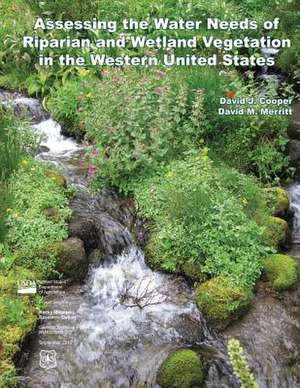Assessing the Water Needs of Riparian and Wetland Vegetation in the Western United States
Autor David J. Cooper, David M. Merritt Contribuţii de U. S. Department Of Agricultureen Limba Engleză Paperback
Preț: 133.39 lei
Nou
Puncte Express: 200
Preț estimativ în valută:
25.52€ • 26.60$ • 21.13£
25.52€ • 26.60$ • 21.13£
Carte disponibilă
Livrare economică 13-27 martie
Preluare comenzi: 021 569.72.76
Specificații
ISBN-13: 9781480134218
ISBN-10: 148013421X
Pagini: 134
Dimensiuni: 216 x 279 x 7 mm
Greutate: 0.33 kg
Editura: CreateSpace Independent Publishing Platform
ISBN-10: 148013421X
Pagini: 134
Dimensiuni: 216 x 279 x 7 mm
Greutate: 0.33 kg
Editura: CreateSpace Independent Publishing Platform
